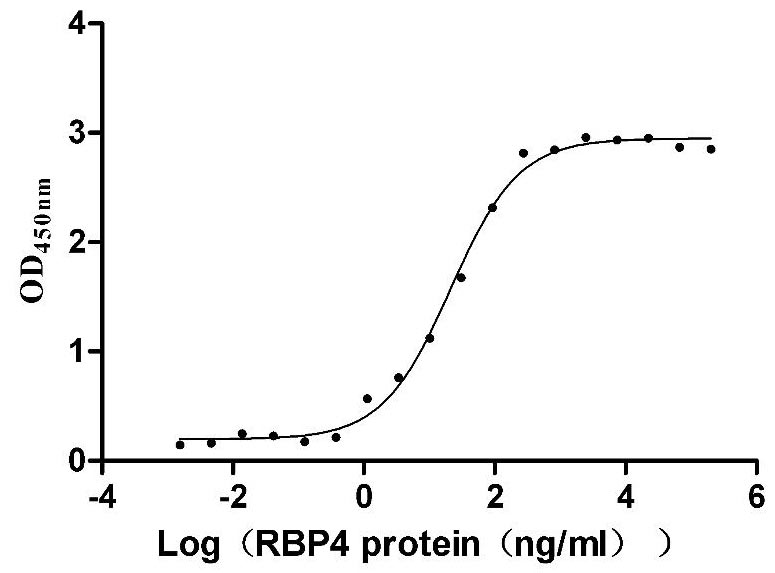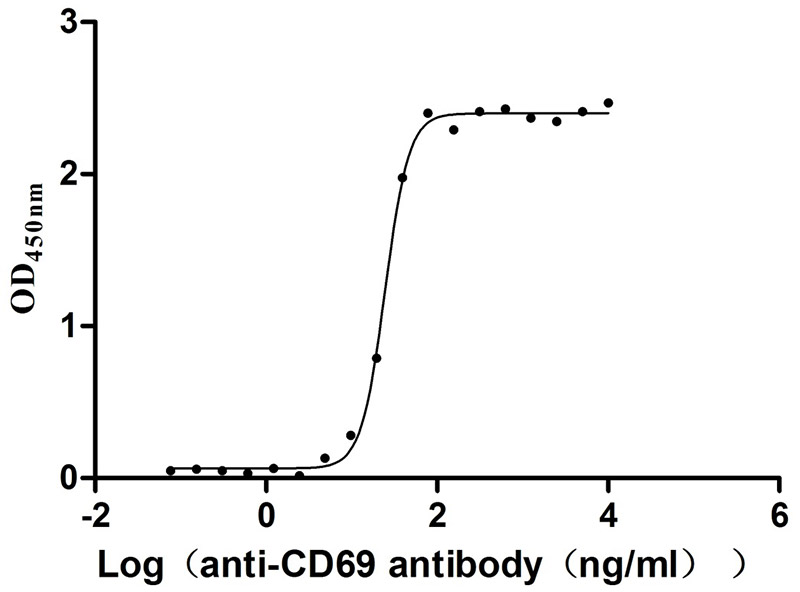Recombinant Mouse Epsilon-sarcoglycan (Sgce), partial
-
中文名称:小鼠Sgce重组蛋白
-
货号:CSB-YP021185MO1
-
规格:
-
来源:Yeast
-
其他:
-
中文名称:小鼠Sgce重组蛋白
-
货号:CSB-EP021185MO1
-
规格:
-
来源:E.coli
-
其他:
-
中文名称:小鼠Sgce重组蛋白
-
货号:CSB-EP021185MO1-B
-
规格:
-
来源:E.coli
-
共轭:Avi-tag Biotinylated
E. coli biotin ligase (BirA) is highly specific in covalently attaching biotin to the 15 amino acid AviTag peptide. This recombinant protein was biotinylated in vivo by AviTag-BirA technology, which method is BriA catalyzes amide linkage between the biotin and the specific lysine of the AviTag.
-
其他:
-
中文名称:小鼠Sgce重组蛋白
-
货号:CSB-BP021185MO1
-
规格:
-
来源:Baculovirus
-
其他:
-
中文名称:小鼠Sgce重组蛋白
-
货号:CSB-MP021185MO1
-
规格:
-
来源:Mammalian cell
-
其他:
产品详情
-
纯度:>85% (SDS-PAGE)
-
基因名:Sgce
-
Uniprot No.:
-
别名:Sgce; Epsilon-sarcoglycan; Epsilon-SG
-
种属:Mus musculus (Mouse)
-
蛋白长度:Partial
-
蛋白标签:Tag type will be determined during the manufacturing process.
The tag type will be determined during production process. If you have specified tag type, please tell us and we will develop the specified tag preferentially. -
产品提供形式:Lyophilized powder
Note: We will preferentially ship the format that we have in stock, however, if you have any special requirement for the format, please remark your requirement when placing the order, we will prepare according to your demand. -
复溶:We recommend that this vial be briefly centrifuged prior to opening to bring the contents to the bottom. Please reconstitute protein in deionized sterile water to a concentration of 0.1-1.0 mg/mL.We recommend to add 5-50% of glycerol (final concentration) and aliquot for long-term storage at -20℃/-80℃. Our default final concentration of glycerol is 50%. Customers could use it as reference.
-
储存条件:Store at -20°C/-80°C upon receipt, aliquoting is necessary for mutiple use. Avoid repeated freeze-thaw cycles.
-
保质期:The shelf life is related to many factors, storage state, buffer ingredients, storage temperature and the stability of the protein itself.
Generally, the shelf life of liquid form is 6 months at -20°C/-80°C. The shelf life of lyophilized form is 12 months at -20°C/-80°C. -
货期:Delivery time may differ from different purchasing way or location, please kindly consult your local distributors for specific delivery time.Note: All of our proteins are default shipped with normal blue ice packs, if you request to ship with dry ice, please communicate with us in advance and extra fees will be charged.
-
注意事项:Repeated freezing and thawing is not recommended. Store working aliquots at 4°C for up to one week.
-
Datasheet :Please contact us to get it.
相关产品
靶点详情
-
功能:Component of the sarcoglycan complex, a subcomplex of the dystrophin-glycoprotein complex which forms a link between the F-actin cytoskeleton and the extracellular matrix.
-
基因功能参考文献:
- Sgcem+/pGt mice show germline absence of major and brain-specific isoforms harboring exons 3' to intron 9. Sgce was maternally-imprinted in our mouse model. Sgcem+/pGt mice exhibited tiptoe walking and occasional stimulus-induced appendicular flexion posturing preweanling. Adult Sgcem+/pGt mice showed increased slips on a raised-beam task, anxiety-like behavioral abnormalities, and narrowed hindlimb stance widths. PMID: 27890709
- The results suggest that varepsilon-sarcoglycan in the cerebellar Purkinje cells contributes to the motor learning, while loss of varepsilon-sarcoglycan in other brain regions may contribute to nuclear envelope abnormality, myoclonus and motor coordination deficits. PMID: 22040906
- results suggest that the loss of epsilon-sarcoglycan in the striatum contributes to motor deficits, while it alone does not produce abnormal nuclear envelopes or myoclonus PMID: 22080833
- impaired ectodomain shedding of M68T, a process that occurs physiologically for epsilon-sarcoglycan resulting in the lysosomal trafficking of the intracellular C-terminal domain of the protein. ( epsilon-sarcoglycan ) PMID: 21796726
- Data describe mice carrying mutations in both Dyt1 and Sgce and show that these double mutant mice show earlier onset of motor deficits in beam-walking test. PMID: 20627944
- Sgce gene is imprinted, with exclusive expression from the paternal allele. PMID: 16099459
- These results suggest that the two epsilon-SG isoforms might play different roles in synaptic functions of the central nervous system. PMID: 15193417
- High expression levels of epsilon-sarcoglycan mRNA and protein were found in the mitral cell layer of the olfactory bulb, the Purkinje cell layer in cerebellum, and the monoaminergic neurons in the mouse midbrain. PMID: 15612018
- diverse symptoms associated with myoclonus-dystonia are indeed resulted from a single SGCE gene mutation that leads to alterations of dopaminergic and serotonergic systems. PMID: 16815860
- Data demonstrate a novel function of the sarcoglycan complex in whole body glucose homeostasis and skeletal muscle metabolism, suggesting that the impairment of the skeletal muscle metabolism influences the pathogenesis of muscular dystrophy. PMID: 19494113
显示更多
收起更多
-
亚细胞定位:Cell membrane, sarcolemma; Single-pass membrane protein. Golgi apparatus. Cell projection, dendrite. Cytoplasm, cytoskeleton.
-
蛋白家族:Sarcoglycan alpha/epsilon family
-
组织特异性:Identified in all tissues tested. Expression highest in lung and placenta, moderate in brain, heart and skeletal muscle, low in kidney and liver. Also detected in embryo.
-
数据库链接:
KEGG: mmu:20392
UniGene: Mm.8739
Most popular with customers
-
Recombinant Human E3 ubiquitin-protein ligase ZNRF3 (ZNRF3), partial (Active)
Express system: Mammalian cell
Species: Homo sapiens (Human)
-
Recombinant Mouse Transthyretin (Ttr) (Active)
Express system: Mammalian cell
Species: Mus musculus (Mouse)
-
Recombinant Human Desmoglein-3 (DSG3), partial (Active)
Express system: Baculovirus
Species: Homo sapiens (Human)
-
Recombinant Human Early activation antigen CD69 (CD69), partial (Active)
Express system: Mammalian cell
Species: Homo sapiens (Human)
-
Recombinant Human C-type lectin domain family 4 member C (CLEC4C), partial (Active)
Express system: Mammalian cell
Species: Homo sapiens (Human)
-
Recombinant Human Oncostatin-M (OSM), partial (Active)
Express system: Mammalian cell
Species: Homo sapiens (Human)


















